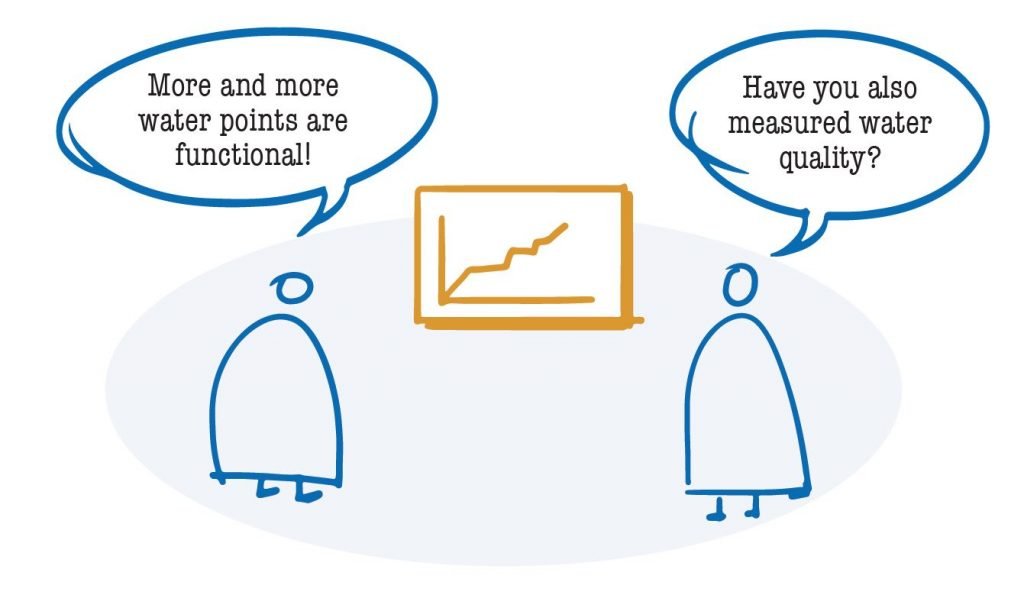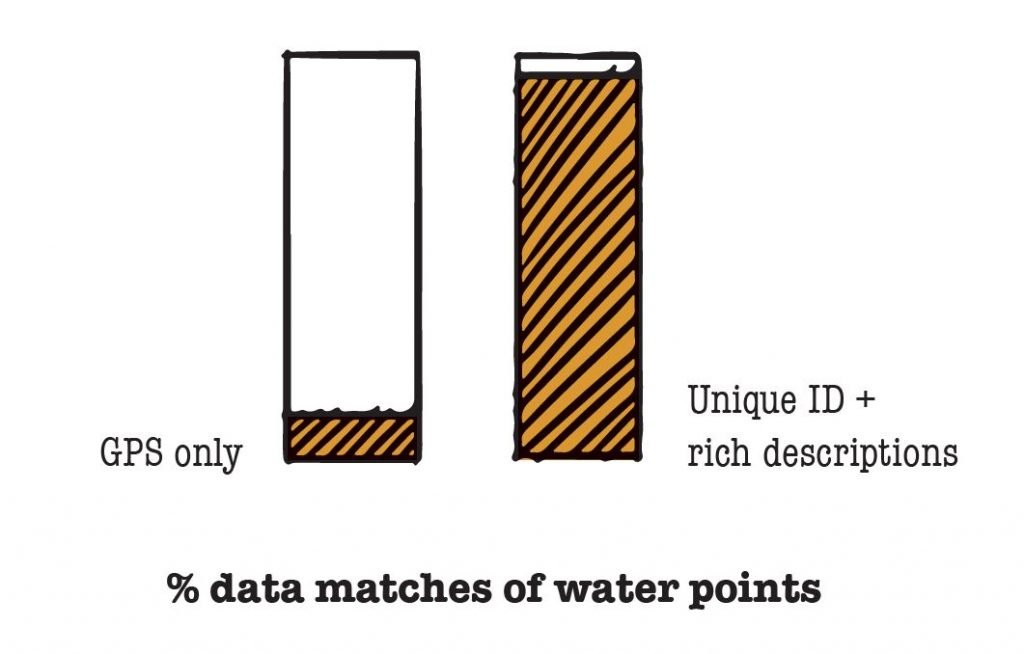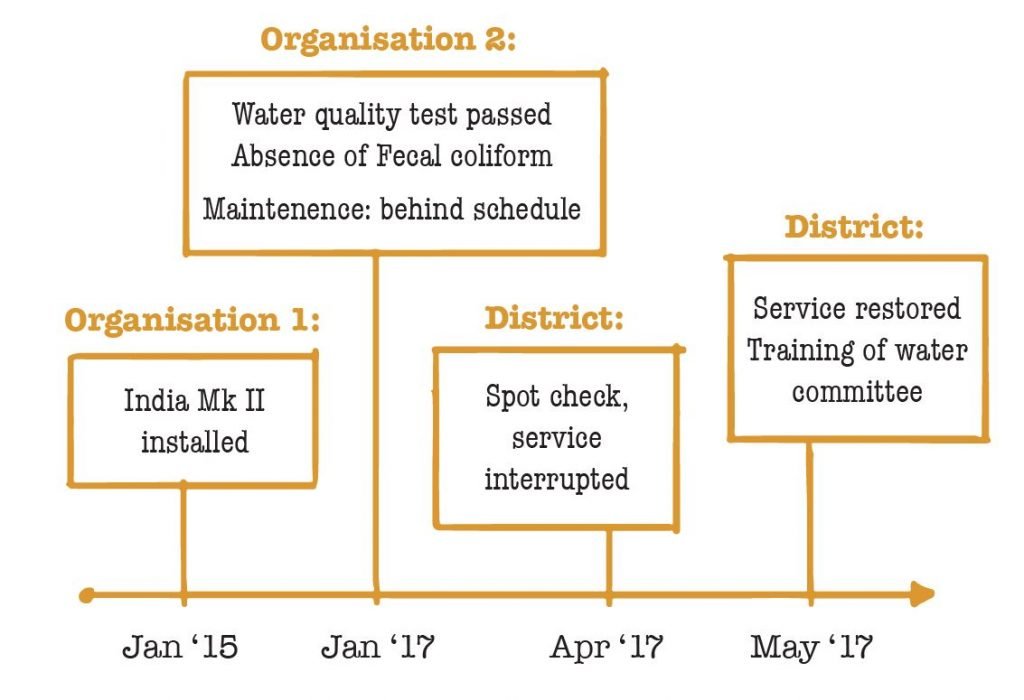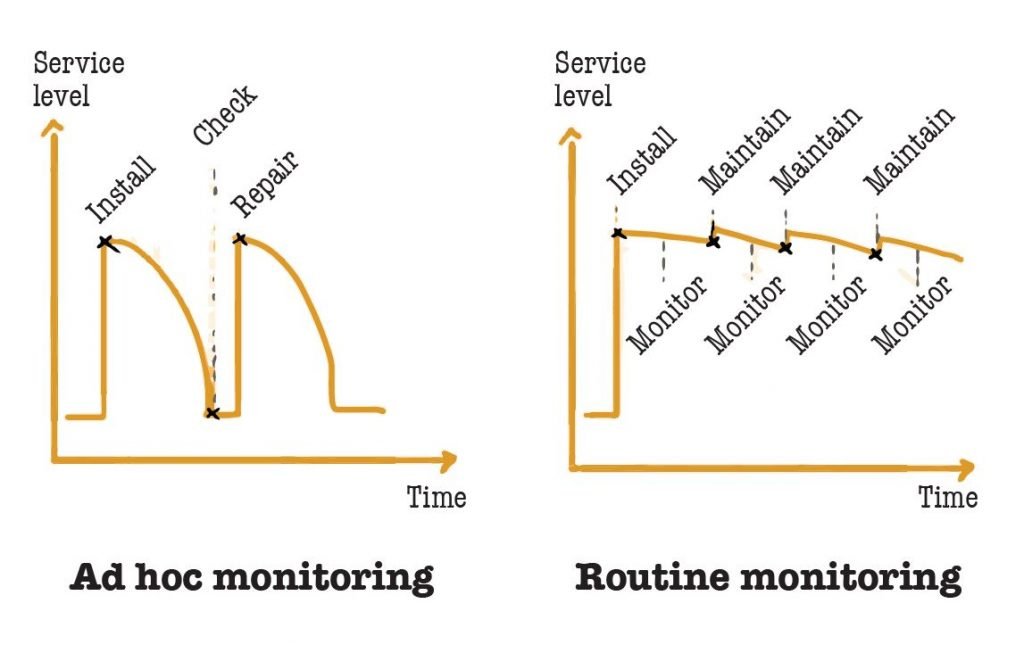Routine monitoring of water points is essential to achieving Sustainable Development Goal target 6.1.
This blog post has originally been posted on ircwash.org.
Recent research by WASHNote and IRC Uganda shows how data about water points are being used to improve drinking water services. The research provides actionable guidance for national and local governments, NGOs, and donors on how to make the best use of water point data.
From water points to improving services
Achieving Sustainable Development Goal (SDG) 6 by 2030 requires accelerating progress and investment dramatically and a shift to providing services instead of infrastructure. National policy targets and the SDGs are not going to be met at the current rate of investment and failure of existing infrastructure due to a lack of service monitoring using water point data.
Evidence on the actual state of basic and safely managed services, including the location of water sources and water supply and their other attributes, will be pivotal for accelerating progress and ultimately achieving SDG 6.1. It is crucial for decision-makers to understand this role of water point data.

How data are improving services
Water point data are typically collected by community or geographical area and sometimes with a name, identifiers and/or GPS coordinates. Collecting these data is relatively expensive when it is not included in routine operations. Many inventories are undertaken only once without a plan for routine updates.
National governments have used water point data to develop national policy targets and inform joint sector reviews. Local governments have used water point data to assess services, plan corrective actions, for example identifying hand pumps for rehabilitation, training water committees, and lobbying for funding. Today, it is possible for international and local stakeholders to find each other, work together and advocate for improving services.
Universal lessons
While there is great potential, some challenges hamper the widespread use of water point data, for instance, the focus on one-off data collection, diverse approaches to collection and analysis, and the extent to which data are – or are not – being shared publicly. However, there are a number of universal lessons that everyone should take on board. This will enable us to make better use of water point data.
1. Use unique identifiers, rich descriptions, and photos to ensure water point records are unambiguous and can be tracked over time. It should be possible to update a water point based on a phone call with a vendor or caretaker.

2. Publish points to the Water Point Data Exchange (WPDx) and National Water Atlases to ensure that these records and unique identifiers are known and reused.

3. Contribute resources to national and district water monitoring and evaluation systems to ensure routine monitoring and evaluation of services. The Direct Support Cost Tool can estimate district requirements and GLAAS/TrackFin can help estimate national requirements.

National and local governments, NGOs, donors, and implementers each have different roles in ensuring sustainable services. The white paper “Harnessing water point data to improve drinking water services” provides actionable guidance for each role on how to use water point data and improve water point monitoring based on existing practices and the experience of the authors working on water point monitoring programmes and tools. There are complimentary 2-page fact sheets available with detailed recommendations for each of the audiences.
The White Paper builds on a) more than 30 cases from government, development partners, and the private sector; b) the experiences of users of the Water Point Data Exchange; c) interviews with leaders in the space of water point monitoring; and d) action research in Uganda, a country leading in the use and publication of water point data. Please find the products through the links below:
- White Paper: Harnessing Water Point Data to Improve Drinking Water Services
- Actionable Guidance for National Government
- Actionable Guidance for Donors and Investors
- Actionable Guidance for Local Government
- Actionable Guidance for NGOs and Implementers
The White Paper is developed by WASHNote and IRC Uganda on behalf of the Water and Development Alliance (WADA), through the support of USAID and The Coca Cola Company.

Pingback: National water point monitoring: actionable guidance – WASHNote